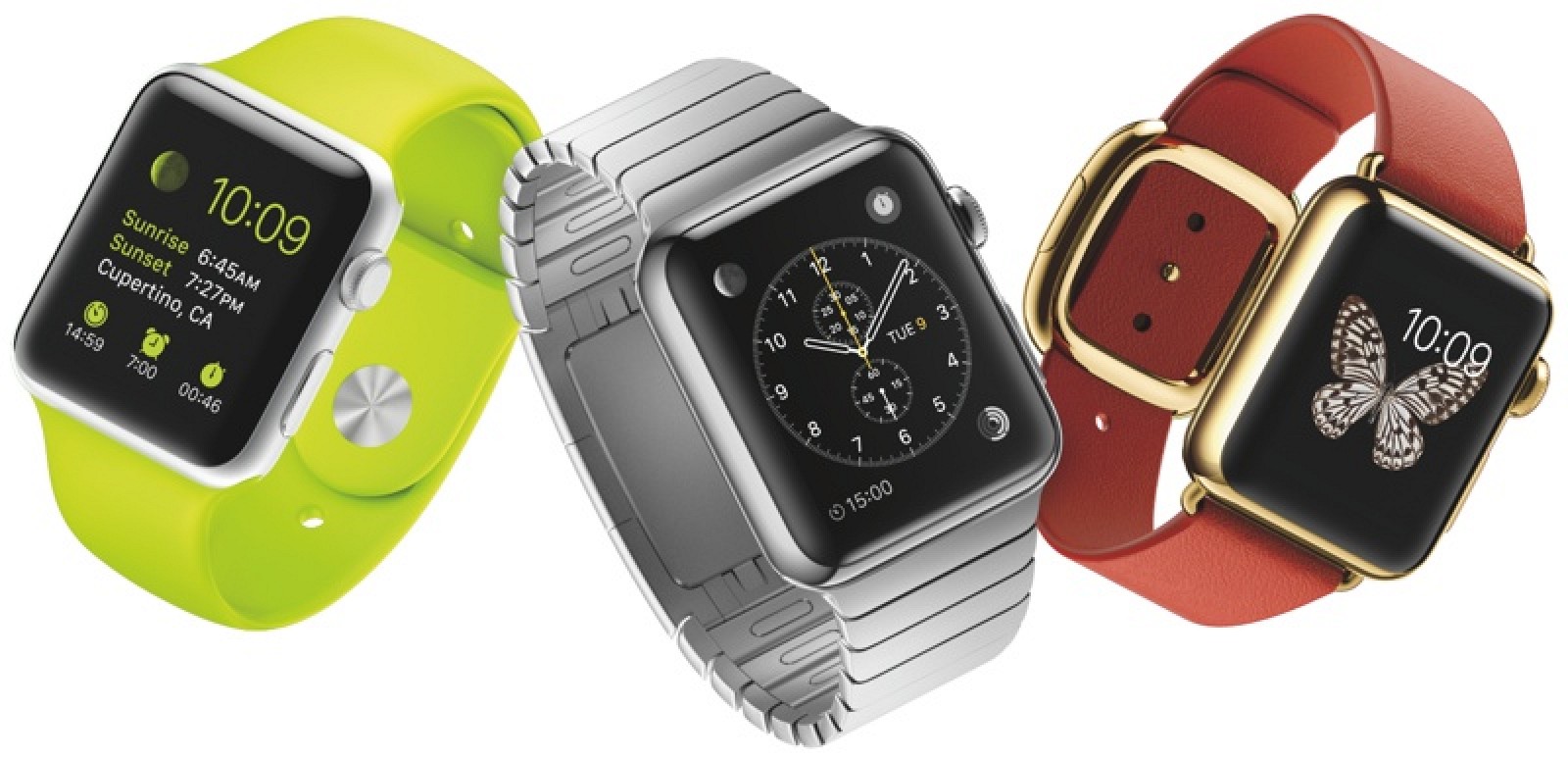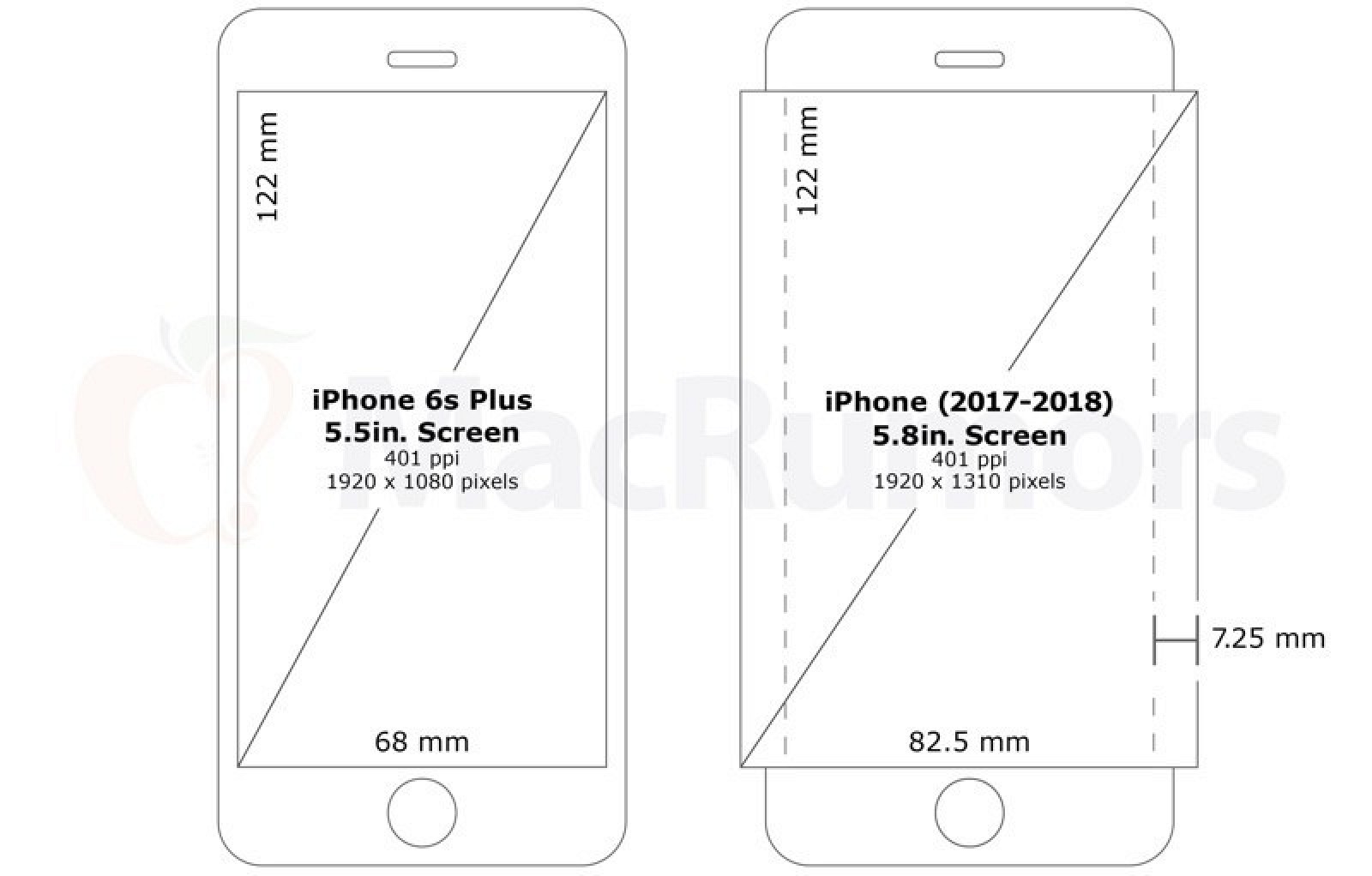iPhone 8 Rumours - Display, Processor and Wireless Charging
Source: MacRumors.com
Related
- Apple's iPhone 8 - Coming in 2017
- Naming and Design
- Display, Processor and Wireless Charging
- Other Features - Biometrics - Taptic Engine - Cameras
- Release Date and Beyond the iPhone 8
Display
At least one iPhone 8 model is expected to include a flexible OLED display and Apple has already signed a deal with at least one manufacturer, Samsung, to produce OLED displays for devices set to debut in 2017.
Samsung will provide Apple with an estimated 40 million AMOLED panels in 2017, and will be Apple's sole supplier in 2017. OLED displays from companies like AU Optronics, Japan Display, and Sharp won't be ready until 2018, so Apple will need to rely heavily on Samsung in 2017.
Some rumors have suggested OLED display production could be constrained due to yield issues, which could affect available supply at launch and could even impact Apple's decision to use OLED panels.
Apple may also be investing in AMOLED supplier AU Optronics and it has a secret lab in Taiwan where it is exploring advanced display options like OLED and Micro-LED. Apple's suppliers are also gearing up to produce OLED displays, investing in new equipment and technology.
An OLED display eliminates the need for the backlighting that's used in traditional LCDs, which would allow Apple to cut down on the thickness and weight of the display used in the device. OLED displays can also be flexible, perhaps allowing Apple to create a device with a more curved or wraparound display.
OLED displays also offer better contrast ratio, truer colors, improved viewing angles, better power efficiency to maximize battery life, and a faster response time than an LCD for faster refresh rates. On the downside, OLED displays don't have the lifespan of an LCD display and they're more prone to water damage, two issues Apple will need to overcome. Apple already uses OLED displays in the Apple Watch.

There are multiple rumors about the size and type of the panels Apple will be using, and rumors indicate Apple is testing more than 10 iPhone prototypes. One rumor suggests Samsung is supplying Apple with 5.5-inch OLED panels, while another says Apple is seeking a 5.8-inch OLED display to be used in one of the iPhone 8 models, and yet another says Apple will debut 5 and 5.8-inch screens, one with an OLED panel and one with a traditional LCD screen.
In addition to confusion over the size of the new iPhones set to debut in 2017, there are also conflicting rumors on display design. On the whole, it's looking like we're going to see at least one model of the iPhone with an OLED display that is perhaps curved and is edge-to-edge with no bezel. To get a clearer picture of what to expect from the iPhone 8, we'll need to wait for additional information, but some of the possibilities are listed below.
First of all, and perhaps most interesting, Apple blogger John Gruber says he's heard some "scuttlebutt" suggesting Apple has plans to implement an edge-to-edge display. That means the phone would have no top, bottom, or side bezels, with the display taking up the entire front of the device.
Gruber's information has been confirmed by reports from The Wall Street Journal and Bloomberg, both of which believe Apple is working on an edge-to-edge display that makes the iPhone look like a single piece of glass.
Sensors like Touch ID and the front-facing camera will somehow be embedded in the display, invisible to the naked eye, and there will be no iconic Home button on the device. Apple has been working on developing touch and display driver (TDDI) chips since 2015, so it's definitely possible that the iPhone 8 will have no Home button, and Apple has also patented a method for embedding Touch ID and an ambient light sensor in the display.
With the edge-to-edge display, KGI Securities analyst Ming-Chi Kuo believes Apple will continue to use a 2.5D curved display, like the existing display in the iPhone 7. Unlike some other rumors, he does not predict more dramatic curves that cover the sides of the device.
In this scenario, it's not clear if Apple will shrink down the iPhone to the size of the display or expand the display to match the existing iPhone sizes, but Kuo believes that if Apple introduces a large-screen edge-to-edge OLED iPhone that's around 5.8 inches, the active display area could be smaller, approximately 5.1 to 5.2 inches.
If Apple does not completely eliminate the bezels in the iPhone 8, there's a chance that a 5.8-inch display hints at plans for a wraparound screen or a screen with dramatic curved edges, as has been mentioned in some display rumors. Display expert Ray Soneira has speculated a wraparound screen is a possibility, as seen in the mockup below, and Apple has patented similar concepts.

When applied to the height of an existing 5.5-inch iPhone, a 5.8-inch display like the one Apple is rumored to be working on would leave an extra 7.25mm of display on each side that could be used to wrap around the edges of the device. This would extend the display across the front and sides of the iPhone, perhaps enabling side-based gestures and buttons. We don't know what shape an iPhone with side bars could take, but the rumored 5.8-inch size of the display is about right to add side panels to current-generation iPhones.
Based on information sourced from the Asian supply chain, IHS analyst Kevin Wang also believes the 2017 iPhone will include a "dual-curve" OLED display that covers the left and right edges of the device. It is not clear from Wang's statement how far the display will extend to the edges of the device or whether it will be a subtle curve for design purposes or a functional wraparound display as Samsung uses in its Galaxy Edge devices.
Should Apple use a display with curved edges, it may also implement new touchscreen technology that would allow the edges of the device to respond to touch gestures.
Multiple reports from analysts and out of the Asian supply chain suggest the OLED display could be limited to one iPhone 8 model as a feature to distinguish it from other iPhone 8 models. Remaining iPhone 8 models would reportedly use a traditional LCD display in this scenario for a total of three iPhones in 2017.
Processor
TSMC has begun to tape out the design for the A11 chip built on a 10-nanometer process, completing the first stages of the design that is likely destined for the 2017 iPhone. Certification for the 10-nanometer process is expected to be achieved in late 2016, with the first 10-nanometer chips sent to Apple for validation during the first quarter of 2017. TSMC has reportedly secured all orders for the A11 chip.
An A11 chip, like all of Apple's chip upgrades, will be both faster and more energy efficient, in addition to being smaller.
Wireless Charging
Apple is working on long-range wireless charging technology that rumors suggest could be implemented in iPhones as soon as 2017, making it an ideal addition to the iPhone 8. Long-range wireless charging is superior to many existing wireless charging methods because it does not require devices to be as close to a charging source or mat.
There are some obstacles to overcome before such technology can be implemented, such as the loss of power transfer efficiency that occurs when the distance between the transmitter and the receiver is increased. This causes batteries further away from a charging source to charge more slowly.
Apple has been hiring engineers with expertise in wireless charging in recent months, suggesting a wireless charging feature could indeed be in the works. With Apple having eliminated the headphone jack in the 2016 iPhone 7, leaving the Lightning port to serve multiple functions, wireless charging is a logical next step for the 2017 iPhone. Rumors of a glass body also support wireless charging rumors, as wireless charging functionality works better without an aluminum casing.
Apple is rumored to be seeking a supplier for wireless charging chips, and the rumor suggests the wireless charging functionality could potentially be enabled through the use of a case or other iPhone accessory rather than built into the iPhone itself.
Apple manufacturing partner Foxconn is said to be testing wireless charging modules that are intended for the 2017 iPhone. Whether the modules will make it into future iPhones depends on whether Foxconn can boost the yield rate to a satisfactory level.
KGI Securities analyst Ming-Chi Kuo believes that all new iPhones are likely to support wireless charging next year, including the 4.7-inch model, the larger ~5.5-inch model, and a high-end OLED model.
There are also rumors suggesting Apple could be working with a partner, possibly Energous, a company that's developed a long-range wireless charging solution called WattUp.
We will undoubtedly hear more on Apple's wireless charging plans in the months leading up to the release of the iPhone 8, giving us a clearer picture of how it will be implemented.
No comments:
Post a Comment